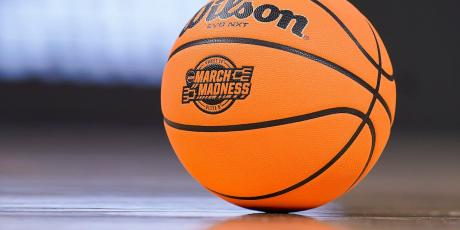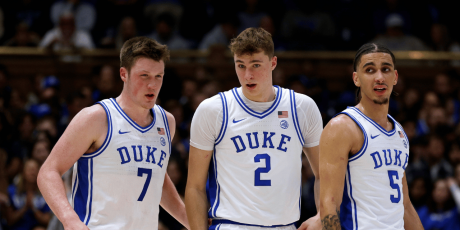John Paulsen's 2024 March Madness Bracket Picks and Tips

March Madness is once again upon us, and since I have a bit of free time during the lull in NFL free agency I thought I’d write an article for 4for4 subscribers outlining the process I use to fill out my bracket. I tend to do quite well in my pools and it’s rare that my bracket isn’t in the hunt heading into the Final Four.
Not surprisingly, my process is statistics-driven, utilizing the following tools:
- Pomeroy ratings (overall, offensive efficiency, defensive efficiency)
- Sagarin Ratings (now defunct)
- Giant Killers blog (ESPN) / Bracket Breakers (The Athletic)
- Bart Torvik’s site
- The Power Rank
Note: While I have plenty of data to use, I’ll admit that I’m not the most informed when it comes to key injuries to specific teams, so feel free to hit me up on Twitter (or email support) to let me know if I’ve overlooked something.
Hosting Your Own Pool? Here’s a Tip.
I’m in a long-running pool that has standard scoring with one caveat: For the first two rounds only, if someone correctly picks a (seed) upset, they are awarded the appropriate points for the win PLUS the difference in the seeds. For example, if a 10-seed beats a 7-seed in the first round, they would receive one point for the win plus three points (10 minus 7) for the upset, for a total of four points.
Understand Your Bracket Pool
If your bracket is only with 10 people, you don’t have to pick too many crazy upsets or sleepers. Using websites like PoolGenius to help guide your selections can be a massive advantage just by using their selections. It really isn’t until your bracket pool becomes closer to 100 people that you have to start being more contrarian with your champion choices. Get an exclusive discount of up to 55% off a PoolGenius subscription!
Pomeroy Ratings
Ken Pomeroy’s site has been a predictive tool for years.
In the last 15 years…
- Fifty-three of the 60 Final Four (88.3%) teams went into March Madness ranked inside the Top 20 in KenPom overall rankings.
- Eight of the past 15 NCAA champions were rated No. 1 at KenPom heading into the tournament.
In the last 21 years…
- Nineteen of the last 21 national champions, including last year’s winner (UConn), have entered the tournament Top 21 in offensive efficiency and Top 37 in defensive efficiency. I’ll call this the 21/37 Rule moving forward.
- The last six national champions entered the tournament in the Top 6 in offensive efficiency, including last year’s 4-seed champion, UConn.
Bracket Breakers / Giant Killers
Created by Peter Keating and Jordan Brenner, the Giant Killers blog has been under the ESPN umbrella for years, and I enjoy reading their quantitative take on the potential upsets in the first round. However, as of 2018, the duo left ESPN. They are now at The Athletic and are deploying their model under the “Bracket Breakers” moniker. Over the past two seasons, the duo’s Top 10 upsets have gone 2-8 and 4-6, or 6-14 total. That’s a 30% hit rate, which is good considering they are only picking upsets.
ESPN’s Giant Killers is now written by John Gasaway and Matt Eisenberg. I’m still waiting to see if they release a 2024 version, but as of press time on Monday, it's not yet out. Over the past two seasons, the Giant Killers blog went 0-8 and 3-5 in their upset picks (3-13, or 19% hit rate).
After identifying the teams with the best chance for the Final Four/Elite Eight/Sweet Sixteen, I’ll refer to Bracket Busters and Giant Killers to help fill out the first round. These resources are especially useful for brackets that reward extra points for picking upsets in the first round or two.
Bart Torvik & The Power Rank
Torvik’s site is similar to Pomeroy’s, so it’s another data point to consider in tight matchups. I discovered The Power Rank last year, so I’ll refer to it in tight matchups as well.
Top-Down Method
The Winner
I like to get my Final Four filled out if possible, and work backwards from there.
Based on Pomeroy trends, the last six champions had an offensive efficiency in the Top 6, so that includes UConn (1), Alabama (2), Illinois (3), Purdue (4), Kentucky (5), and Baylor (6), but only UConn and Purdue also have defensive efficiencies in the Top 37 (the aforementioned 21/37 Rule), so following those trends, they are most likely to win the title.

- All Premium Content
- The most Accurate Rankings Since 2010
- Expert Draft Picks w/DraftHero
- Highest Scoring Lineup + Top Available Players w/LeagueSync
- ...and much much more






















